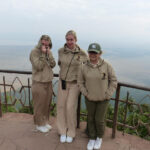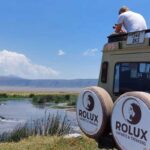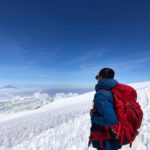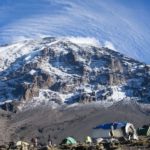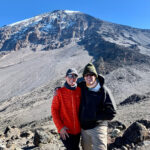Mount Kilimanjaro Trekking Guide 2025
Mount Kilimanjaro—Africa’s highest peak and one of the world’s most iconic trekking destinations—continues to attract thousands of adventurers every year. Whether you’re a seasoned climber or taking on the challenge for the first time, 2025 brings some exciting changes that will impact your journey to the summit.
From new climbing routes and updated regulations to sustainability initiatives and enhanced safety measures, this guide covers everything you need to know about climbing Mount Kilimanjaro in 2025.
What’s New for Kilimanjaro Climbers in 2025?
If you’re planning to climb Kilimanjaro in 2025, here are the most important updates:
- New Climbing Routes – More options to reduce congestion and enhance the trekking experience.
- Updated Regulations – Stricter safety and environmental policies.
- Sustainability Initiatives – Improved waste management and conservation efforts.
- Technology Upgrades – GPS tracking and better emergency response systems.
- Rising Costs – Increased permit fees and trekking expenses.
Let’s dive into these changes in detail.
New Climbing Routes for 2025
To ease overcrowding on popular trails like the Machame and Marangu routes, two new trekking paths have been introduced:
1. The Northern Wilderness Trail
-
A scenic, off-the-beaten-path route for those seeking solitude.
-
Offers unparalleled wildlife encounters and a gradual ascent.
2. The Rapid Ascent Route
-
Designed for experienced climbers looking for a fast summit attempt.
-
Includes shorter acclimatization stops, making it more challenging.
These new options give trekkers a fresh way to experience Kilimanjaro while reducing overcrowding.
Stricter Regulations for 2025 Climbers
With the growing number of climbers, Tanzanian authorities have implemented stricter regulations to improve safety and protect the environment.
Key Regulation Changes:
- Permit Fees Have Increased – Now ranging between $1,200–$1,500 per climber.
- Mandatory GPS Tracking – Every climber must carry a GPS tracker for emergency purposes.
- Porter Welfare Improvements – Maximum weight limits for porters are now strictly enforced to prevent overloading.
These measures aim to enhance safety and ensure ethical trekking practices on the mountain.
Enhanced Sustainability Measures
Kilimanjaro’s fragile ecosystem faces increasing pressure from tourism. In 2025, new sustainability policies are in place to protect the environment:
- Zero-Waste Trekking – Climbers must carry out all trash they bring.
- Reforestation Programs – Tourists can now participate in tree-planting initiatives to offset their carbon footprint.
- Eco-Friendly Toilets – More portable, eco-friendly toilets are now available at high-altitude camps.
These initiatives are making Kilimanjaro one of the world’s most sustainable trekking destinations.
Tech Upgrades: GPS & Emergency Response
2025 sees major technological advancements for climbers, including:
- Live GPS Tracking – Allows family and friends to monitor climbers in real-time.
- Faster Emergency Evacuations – Improved response times in case of altitude sickness or injury.
- Better Communication Devices – More satellite phones and Wi-Fi hubs available on the mountain.
These upgrades significantly enhance safety and connectivity during the climb.
Best Time to Climb Kilimanjaro in 2025
Kilimanjaro is climbable year-round, but the best months remain:
-
January to March – Fewer crowds but colder temperatures at the summit.
-
June to October – The driest months with stable weather conditions.
Avoid:
-
April & May (Rainy season, making trails muddy and difficult).
-
November (Unpredictable weather).
With climate change affecting global weather patterns, climbers should stay updated on forecasts before planning their trek.
Costs & Budgeting for 2025
How Much Does It Cost to Climb Kilimanjaro?
Climbing Kilimanjaro isn’t cheap, and in 2025, costs have increased due to permit hikes and better trekking services.
- Budget Trek: $2,500–$3,500
- Mid-Range Trek: $3,500–$5,000
- Luxury Trek: $5,000+
Prices depend on:
- Route selection – Longer routes cost more.
- Trek operator – Higher-quality companies charge more.
- Group vs. Private – Private treks are significantly more expensive.
To save money, consider booking group climbs or looking for off-season discounts.
Choosing the Right Route for Your Skill Level
Not all Kilimanjaro routes are created equal! Here’s a quick guide:
For Beginners
-
Marangu Route – The easiest, with hut accommodations.
-
Lemosho Route – Scenic and gradual, with high success rates.
For Experienced Climbers
-
Machame Route – A challenging but rewarding trek.
-
Rapid Ascent Route – For those with high-altitude experience.
Choosing the right route dramatically affects your summit success rate!
Luxury Trekking & Unique Experiences
For those who want extra comfort, luxury trekking options now include:
- Gourmet meals on the mountain
- Luxury sleeping tents with heating
- Private chefs & personal porters
Many climbers also combine their Kilimanjaro adventure with a luxury safari in Tanzania or a beach getaway in Zanzibar after the trek.
Is 2025 the Best Time to Climb Kilimanjaro?
Absolutely! 2025 brings exciting new routes, enhanced safety, and sustainable trekking initiatives—making it one of the best times to experience this iconic climb.
Whether you’re a beginner or an experienced trekker, the updates for 2025 promise an unforgettable adventure on Africa’s highest peak.
FAQs About Climbing Kilimanjaro in 2025
1. How much does it cost to climb Kilimanjaro in 2025?
Expect to pay between $2,500 and $6,000, depending on the route and level of service.
2. What is the biggest challenge when climbing Kilimanjaro?
Altitude sickness is the main challenge. Proper acclimatization, hydration, and pacing are key to success.
3. Is Kilimanjaro suitable for beginners?
Yes! Routes like Marangu and Lemosho are beginner-friendly with high success rates.
4. Do I need travel insurance for Kilimanjaro?
Yes! High-altitude trekking insurance that covers emergency evacuation is strongly recommended.
5. Can I climb Kilimanjaro without a guide?
No. Guides are mandatory per Tanzanian regulations to ensure safety and environmental conservation.



